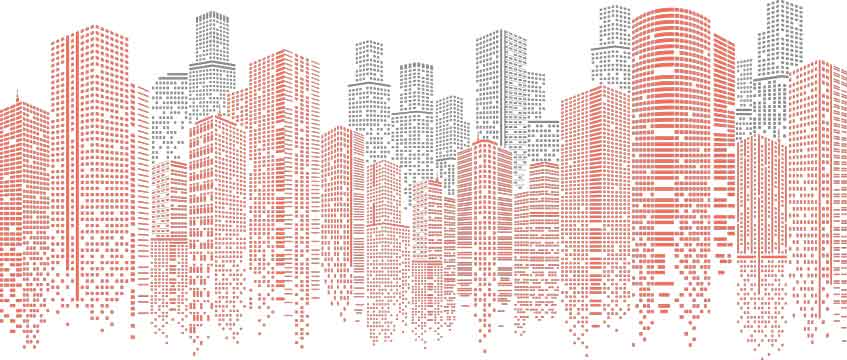The year of the tall building: 52 new towers set to rise across London
London’s tall building development market slumped last year, as construction starts on new towers fell by almost 50% and planning applications tumbled by more than one quarter.
Work started on just 24 tall buildings – towers with more than 20 storeys – compared with 44 in 2019, as pandemic disruption hit the construction market, according to an annual survey by New London Architecture and Knight Frank.
Meanwhile, developers submitted 27.1% fewer planning applications across the London boroughs compared with the previous year, as the initial March lockdown hit confidence in new projects.
London’s tall building development market slumped last year, as construction starts on new towers fell by almost 50% and planning applications tumbled by more than one quarter.
Work started on just 24 tall buildings – towers with more than 20 storeys – compared with 44 in 2019, as pandemic disruption hit the construction market, according to an annual survey by New London Architecture and Knight Frank.
Meanwhile, developers submitted 27.1% fewer planning applications across the London boroughs compared with the previous year, as the initial March lockdown hit confidence in new projects.
Despite the short-term hiatus, the research shows an underlying desire for tall buildings, with the development pipeline holding up in real terms. The total pipeline of tall buildings stands at 584, up by 7.4% from 544 in 2019.
Moreover, nearly three-quarters of new planning applications were submitted in the second half of the year, hinting at a rebound in confidence following the initial economic shock caused by Covid-19 restrictions.
Stuart Baillie, head of planning at Knight Frank, said: “It is a positive indicator. We had a down-tools scenario for the first half of the year, and then things started to come back on stream as we emerged from the first lockdown and a bit more confidence appeared that this was only going to be a temporary position.”
A bump in the road
It was feared that last year’s lockdowns would result in a sustained downturn in tall building development, but aside from a marked drop-off in applications and towers under construction between 2019 and 2020, permissions actually increased and completions remained relatively stable.
Local authorities across London granted 72 full permissions for tall buildings last year, up by 10.8% on 2019, suggesting an increasing willingness from local councils to give towers the green light.
Curator-in-chief at NLA Peter Murray says the speed with which developers got back to work, enabled completion rates to remain relatively robust.
“The government was very well aware of the need for the construction industry to carry on during Covid when it could have closed sites down or been much more restrictive,” he said.
A total of 35 residential and commercial tall buildings were completed in 2020, slightly below the 37 completed the previous year, but still the second highest total in the last decade.
This year, however, is set to be a record breaker for towers, with 52 tall buildings on course to be finished.
“We think this year will be a catch up year, and that the impact will not be quite as great as we had expected in the long term,” says Murray.
Knight Frank’s Baillie says 2020 was more of a “bump in the road” than a permanent disruption but warns that an element of uncertainty remains due to the growing proportion of approved planning applications which have not yet gone to construction.
“We have not yet seen how many of these planning permissions are not being implemented,” he says. “But in the next couple of years that will be something to watch.”
Housing pressure drives outer borough building
The survey also highlights an increasing trend of the spread of tall buildings to London’s outer boroughs as councils seek to meet ambitious housing targets. Around 90% of all towers planned are for residential.
Mayor Sadiq Khan wants councils to build more than 52,000 new homes a year across the entire city under the new London Plan.
A total of 216 tall buildings are in outer London’s pipeline – up by 9.6% from 197 in 2019 – representing some 37% of total pipeline.
“Boroughs have high targets to meet in terms of the homes that they are supposed to be delivering,” says Murray, “but most have complained there is a lack of land available for development. So, if you want to deliver the numbers, one of the key ways to do that is to go tall. It is the most efficient use of what land you have available.”
East London is in line for more towers than any other area – representing 45% of the total pipeline. The boroughs of Tower Hamlets, Newham and Greenwich dominate in the east, representing three-quarters of the total tower pipeline to be built there. North London has the lowest number of tower in the pipeline – just 40, representing 7% of the total planned.
When it comes to size, the City continues to dominate, with 39 storeys being the average height of a tower in the Square Mile, it is followed by Tower Hamlets at 34 storeys and Lambeth and Croydon at 33 storeys. The average height across London is 29 storeys.
To send feedback, e-mail alex.daniel@egi.co.uk or tweet @alexmdaniel or @estatesgazette
Photo: Shutterstock











